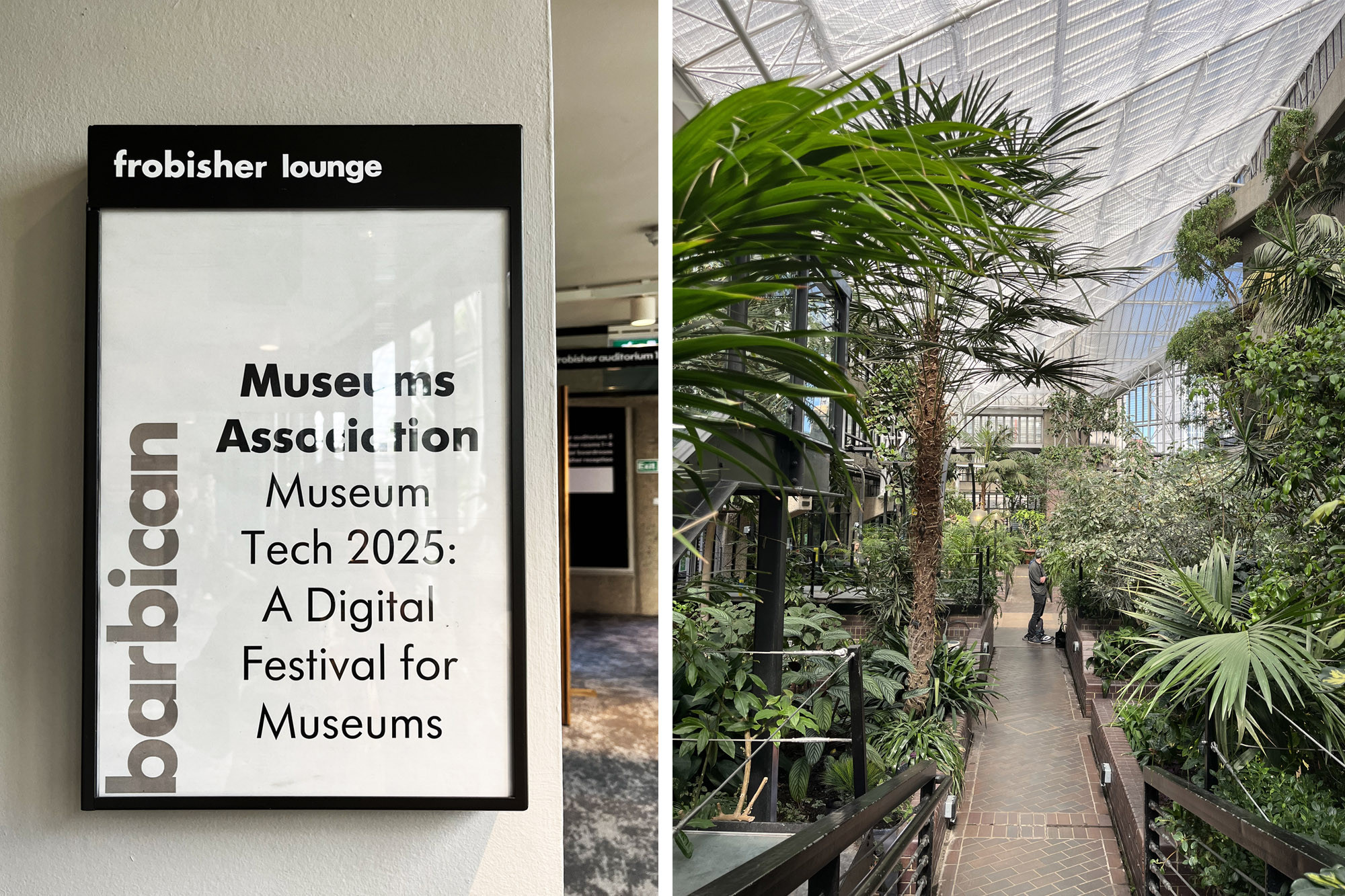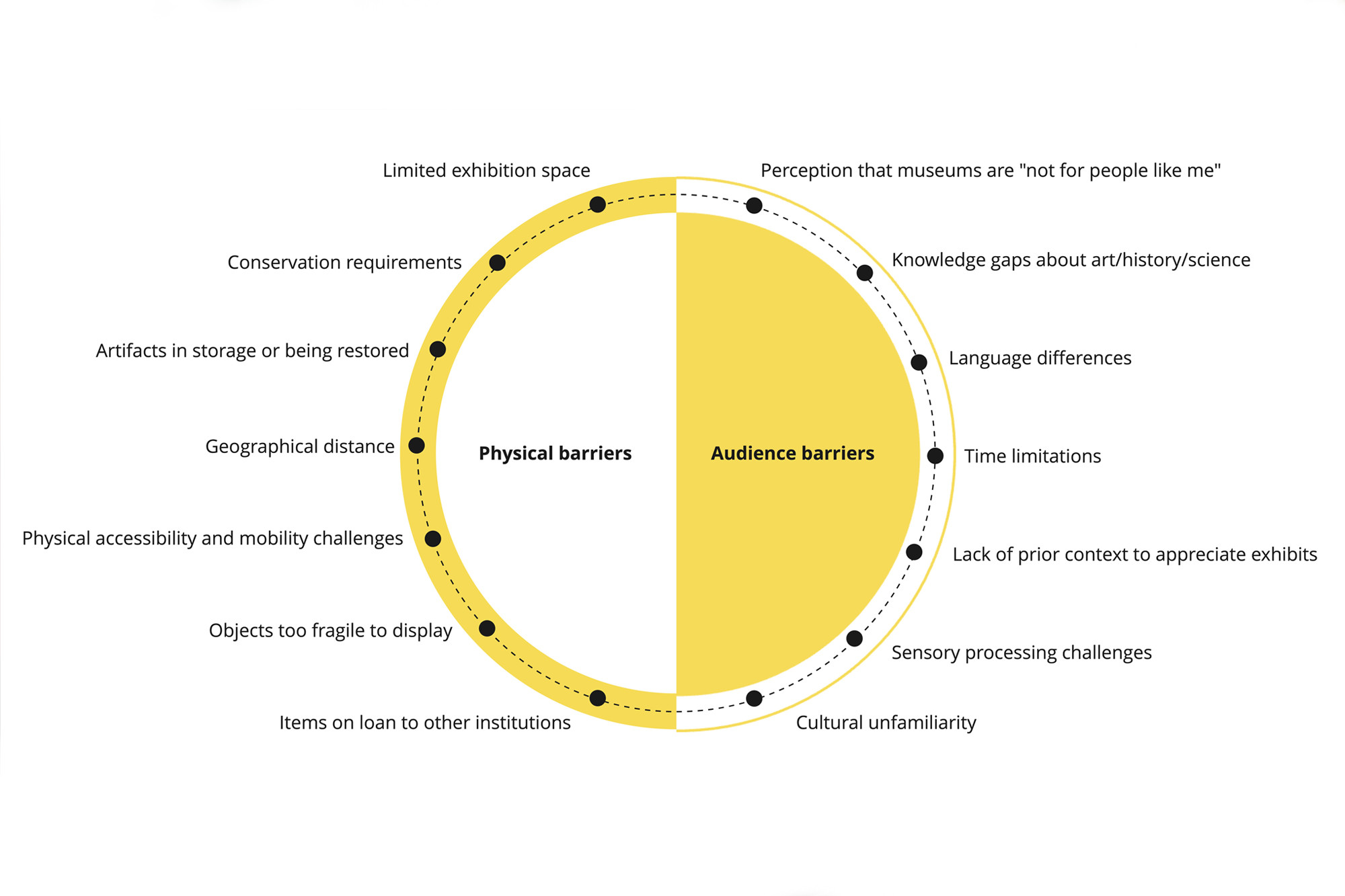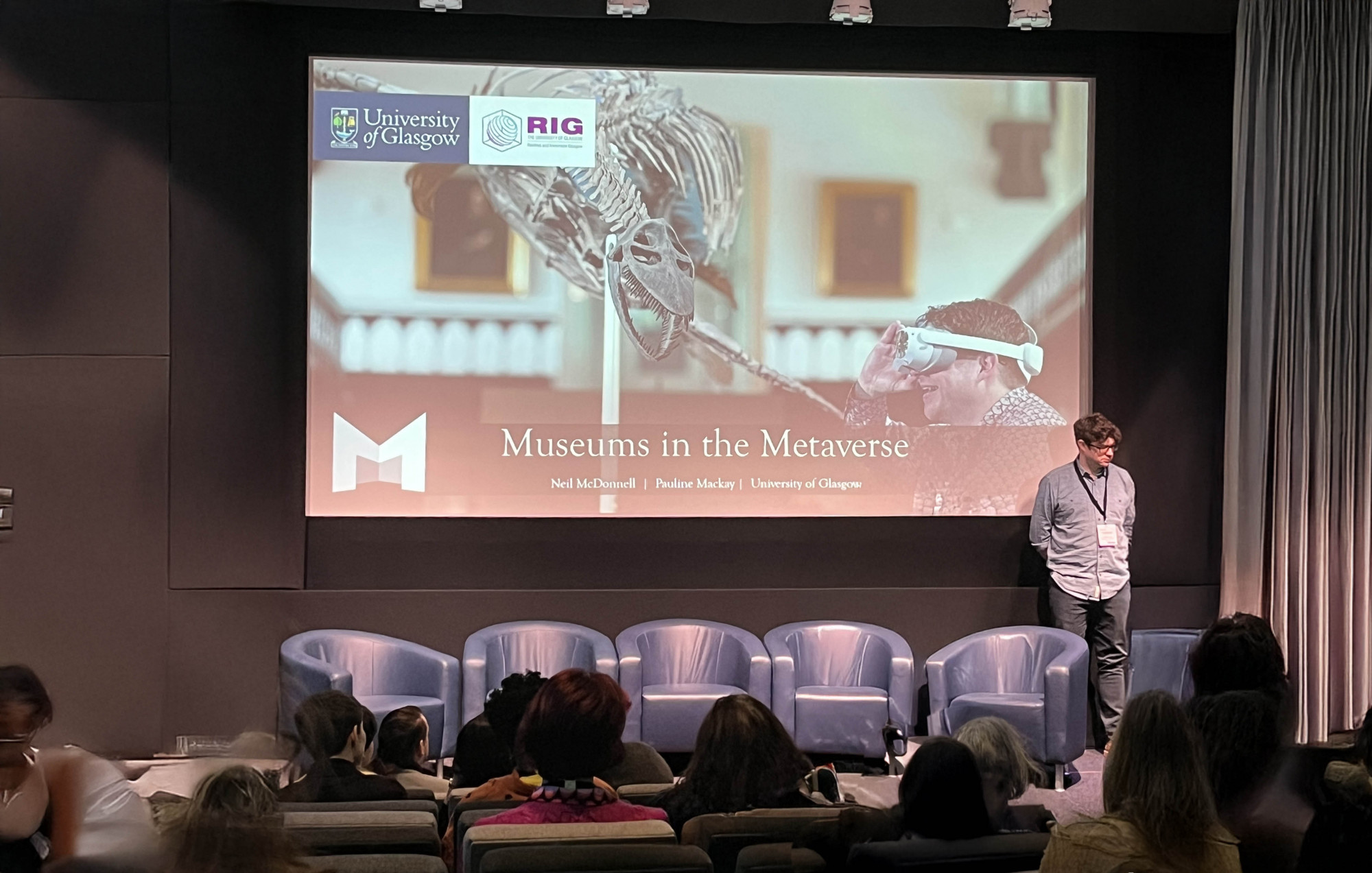Museum Tech 2025 - How Digital is Revealing Museum’s Hidden Stories
Mima's Service Designer, Divya Charlie recently attended Museum Tech 2025: A Digital Festival for Museums at the Barbican in London. In this piece, she reflects on how the event explored innovative ways museums can use technology to enrich visitor experiences.

I had the pleasure of attending the Museum Tech 2025 at the Barbican, a fascinating event exploring how museums can leverage technology to transform visitor experiences and engagement. The programme featured insightful panel talks and a showcase of cutting-edge digital tools, from inclusive AI content management systems for diverse audiences to interactive digital storytelling tools like audio guides and quizzes, that extend the physical museum experience (Simply Art, Digital Venue, Panivox). We also got a taste of the University of Edinburgh's venture into the ‘Museums in the Metaverse’ initiative, building virtual museums using digital heritage assets, while also exploring an economic circularity model that benefits creators and museums.
Among the many thought-provoking discussions, one theme particularly stood out to me: how digital tools can help museums tell "lost stories" - those hidden artefacts, behind-the-scenes processes, and collections that aren't accessible to everyone.
Bringing hidden treasures to light
One of the most compelling aspects of the day was the emphasis on using digital to showcase what visitors cannot normally see. Museums typically display only a fraction of their collections, with the vast majority in storage. Digital experiences can offer exciting opportunities to:
- Reveal sensitive objects that cannot be displayed due to conservation concerns
- Share artefacts that simply don't fit in physical exhibition spaces
- Provide access to items that are temporarily unavailable
- Push boundaries to experience artefacts in imaginative ways that might be physically impossible (future worlds, modifications, see how it might have been used)
As Neil McDonnell and Pauline Mackay from the metaverse session noted, there are both physical barriers and audience barriers that digital experiences can help overcome. Through technologies like photogrammetry (3D scanning), museums can convert and represent objects that would otherwise remain hidden from public view.

Erik Gullstand from Digital Venue, described how digital tools can ‘help museums reach longer and taste stronger’. He also highlighted how they can ‘connect with people who feel they are not qualified to visit museums’, helping to break down the invisible barriers that often keep potential visitors away.
Digital is not a replacement but an enhancement
Another takeaway that was expressed throughout the conference was that digital tools are not meant to replace the physical experience, but to enhance and extend its reach, making it more accessible. The goal is not to substitute in-person visits but to extend the museum experience beyond physical walls, creating deeper and more meaningful connections.
Erik Gullstand from Digital Venue, described how digital tools can ‘help museums reach longer and taste stronger’ — a phrase I particularly loved. He also highlighted how they can ‘connect with people who feel they are not qualified to visit museums’, helping to break down the invisible barriers that often keep potential visitors away.
An interesting shift discussed during the scalable digital delivery panel discussion was leveraging social media, and how such digital platforms are increasingly being used to promote social value alongside their algorithmic priorities. With its capability to have different tones of voice based on your platform, you are able to engage with different audiences and demographics. So you can show people about the day-in-the-life of an art curator on your Instagram channel, while also posting behind-the-scenes conservation work on your LinkedIn, and creating quick, engaging artefact "reveal" videos on TikTok. This means that museums are finding ways to balance engagement metrics with meaningful cultural impact.
Creating impactful, efficient experiences
Several sessions highlighted the importance of creating impactful experiences in shorter durations. In a time-pressed world, visitors may not have hours to spend exploring content, so digital tools that deliver meaningful engagement quickly are increasingly valuable. This does not mean oversimplifying content - it is about smart, purposeful design that highlights what truly matters, making it more visible, connected, and accessible.
What design agencies might want to consider
For design agencies working in similar spaces, several considerations emerged:
- Focus on the storytelling, not just digitisation: making digital artefacts doesn't stop at just digitising it. The digital 'experience' of that piece of work is the key value that needs to be done well. The technology should serve the story, not the other way around.
- Build for repeatability: anyone can build a good experience once, the question is how to do it again. Sustainable, scalable solutions will have the most impact. This means understanding user needs and behavior patterns before developing solutions.
- Consider the entire journey: digital innovation should not be limited to the product itself but should extend to building its experiences, type of conversations to be had and what stories need to be told. Before a visitor even visits a space, they are already able to form expectations. After engagement, consider how to maintain the relationship and encourage further exploration.
- Create cross-platform experiences: the boundary between online and in-person museum experiences is increasingly blurred, with new visitors wanting to move fluidly between spaces. Audiences are increasingly interested in themes and topics rather than specific objects, and digital can help tap into this trend. We must design for these seamless transitions between spaces.
- Democratise storytelling: the days of museums delivering one-way information are fading. Today's visitors want to participate, contribute and see themselves reflected in museum experiences. We should be able to design for user-generated experiences and content to form more meaningful connections with the collections.

Building a successful digital strategy
What makes a good digital strategy for museums? According to the speakers:
- Embed digital across the whole organisation, not just in one or two departments
- Focus and prioritise what your organisation wants to achieve (and be clear about what you don't want to do and why)
- Find your "superpower" in the digital space - what makes your institution unique?
- Understand current processes first, then integrate digital tools that genuinely enhance them
- Consider environmental impact - from data storage to the wellbeing of staff who work online
- Share knowledge, strategies, and ways of working across the sector
I particularly resonated with the advice to "give audiences something of value before asking for their participation" - building trust before requesting engagement.
Environmental responsibility in digital activities
One of the most forward-thinking aspects of the conference and a great way to end the event was its focus on environmental responsibility in digital museum work with Jo Walton (Sussex Digital Humanities Lab). The session explored understanding offsetting unsustainable AI applications with more sustainable alternatives, while also highlighting the current lack of frameworks to measure the impact and carbon footprint of even sustainable digital solutions. Ultimately, behaviour change tends to last better if it’s supported institutionally and systematically.

Reflecting on the conference, I found myself wondering: could creating digital versions of unseen artefacts actually generate more excitement about the physical museums? Rather than replacing visits, might these digital glimpses of ‘what can't be seen’ create experiences that motivate people to invest in the physical museum?
The future of museum experiences
The conference left me inspired by the possibilities ahead for museums — from choosing which stories to tell, whether by enhancing what is already visible or revealing what is usually hidden, to balancing the focus between enriching the physical museum experience and building long-term digital engagement strategies.
What was clear from Museum Tech 2025 is that digital innovation in museums is not just about adopting new technologies - it's about rethinking how we share knowledge, who we share it with, and what stories deserve to be told. By bringing our hidden treasures to light through thoughtful digital experiences, museums have an exciting opportunity to connect with new audiences and deepen its engagement with existing ones.
This was truly a holistic conference, touching on various topics beyond just extending digital capabilities. It emphasised making museum experiences inclusive and concluded with important ethical considerations around digital platforms and the decisions that shape them.
What are your thoughts? How do you think digital tools can help museums share their ‘lost stories’?
Acknowledgment
This blog post is based on the brilliant ideas, discussions, and projects shared at Museum Tech 2025:A Digital Festival for Museums, hosted by the Museums Association. Insights shared by the speakers, exhibiting organisations and the people working behind the scenes to structure this event helped shape many of the thoughts and themes explored in this written piece.
Written by:

Divya Charlie
Service Designer
Divya is a creative service designer and researcher with experience in participatory design and community-culture projects. Divya explores the human and place based connections across diverse experiences and perspectives, driven by innovation for well-being. She believes that the best solutions emerge through people engagement in collaborative and shared vision environments.